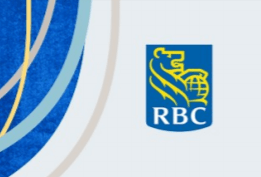- Canadian spending trends continued on solid footing with few signs of second wave worries impacting consumer confidence — yet.
- Overall consumer spending stayed solid, up about 5% in mid-September.
- Though late summer travel spending retrenched, other pandemic-responsive categories like clothing remained strong.
![]()
Fall fashion buoyed spending
- Among retail categories, clothing spending continued to climb, returning to year ago levels.
- Spending on apparel, gifts, and jewelry was up 1.5% relative to last year.
- Other retail categories held on to gains from the past few months.
![]()
Good weather for outdoor entertainment
- Despite plateauing in dollar terms, entertainment spending ticked up relative to last year.
- High golf spending during the summer likely continued into early fall— rather than slowing down as it would have in a normal year.
![]()
But late summer travel declined
- Slower spending on accommodation and car rentals accelerated a downward trend in travel-related purchases that has dominated in the last several weeks.
- Travel spending had recovered partially from pandemic lows, it was still down about 60% in peak summer. It worsened again as the weather cooled.
- At the same time, automotive spending fell slightly, in line with seasonal trends as the summer road trip season came to an end.
![]()
Respite for restaurants was brief
- Labour Day saw the strongest restaurant spending since before the pandemic, but the uptick was fleeting.
- Spending on dining out quickly fell back to -6% relative to a year ago, a level it’s hovered around since July.
![]()

‡ Methodology
RBC’s consumer spending tracking report uses RBC Data & Analytics’ proprietary database of anonymized card transactions by Canadian clients. The data are an accounting of merchant transactions that are divided into various spending categories covering tens of millions of weekly card transactions worth billions of dollars each week. Transactions, both in person and online, are classified into 11 broad spending groups: Dining, Education, Finances, Groceries, Health, Household, Shopping, Transport, Travel, Utilities, and Other. Within each group, the data are further classified: for example, shopping covers merchants classified as clothing stores, hobby shops, electronics stores, and jewellers, among others.
We examined changes in the value of all transactions in these areas for 7-day periods starting January 1st, comparing spending to the same period one year ago. To examine the impact of important events, we looked at how spending changed on specific days, both on a daily basis and on an annualized basis relative to that same weekday a year ago.
Online spending volumes are estimated based on the presence of an RBC card at the time of the authorization. Pre-COVID averages are calculated as the average of the first 11 weeks of 2020, and post-COVID averages are averages of subsequent weeks.
Protecting your privacy and safeguarding your personal information is a cornerstone of our organizational ethics and values and will always be one of our highest priorities. The underlying data for this analysis was aggregated based on transaction date, region and merchant category, and cannot be used to identify any individual client or merchant. For additional information please visit www.rbc.com/privacy.
To view past reports, please visit the COVID Consumer Spending Tracker.
This article is intended as general information only and is not to be relied upon as constituting legal, financial or other professional advice. A professional advisor should be consulted regarding your specific situation. Information presented is believed to be factual and up-to-date but we do not guarantee its accuracy and it should not be regarded as a complete analysis of the subjects discussed. All expressions of opinion reflect the judgment of the authors as of the date of publication and are subject to change. No endorsement of any third parties or their advice, opinions, information, products or services is expressly given or implied by Royal Bank of Canada or any of its affiliates.